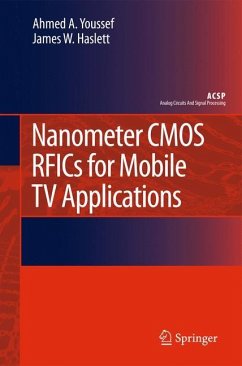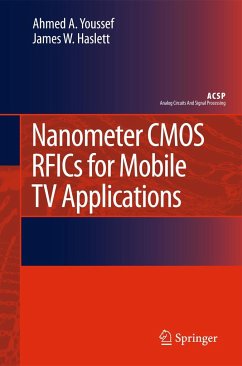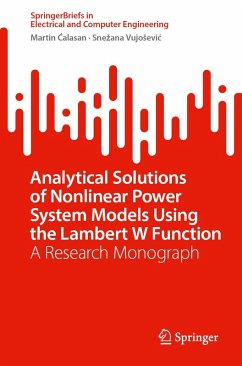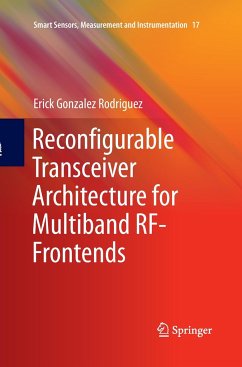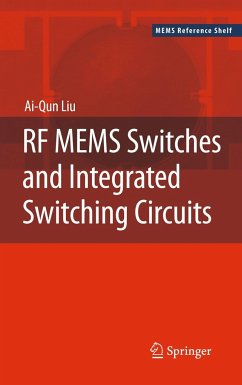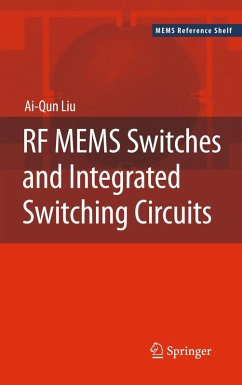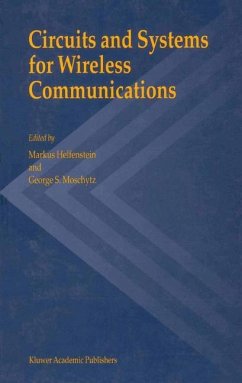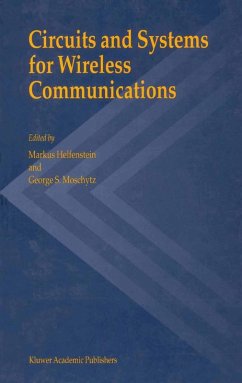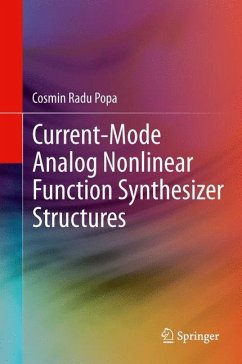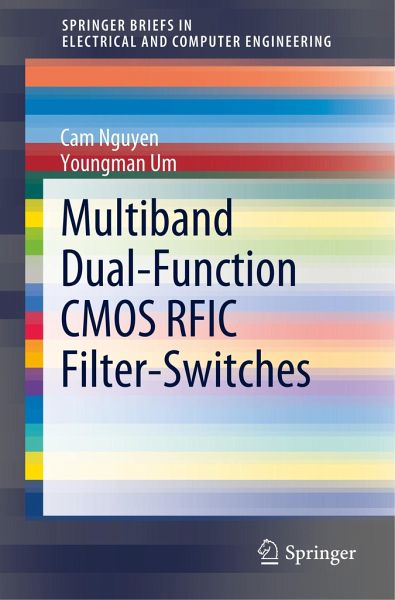
Multiband Dual-Function CMOS RFIC Filter-Switches

PAYBACK Punkte
19 °P sammeln!
This book presents the theory, analysis, and design of multiband dual-function microwave and millimeter-wave CMOS radio frequency integrated circuit (RFIC) filter-switches capable of simultaneous switching and filtering, which are relevant for advanced multiband RF systems. Typical microwave and millimeter-wave switches are designed only for switching purposes without considering frequency selectivity or filtering. A separate filter is normally needed to be used with a switch to provide a filtering function. This conventional design approach hence leads to higher insertion loss, larger size an...
This book presents the theory, analysis, and design of multiband dual-function microwave and millimeter-wave CMOS radio frequency integrated circuit (RFIC) filter-switches capable of simultaneous switching and filtering, which are relevant for advanced multiband RF systems. Typical microwave and millimeter-wave switches are designed only for switching purposes without considering frequency selectivity or filtering. A separate filter is normally needed to be used with a switch to provide a filtering function. This conventional design approach hence leads to higher insertion loss, larger size and higher cost for RF systems.
RF systems operating over multiple bands provide numerous advantages and offer more capabilities for communications and sensing than their single-band counterparts. A concurrent multiband system enables one single system to be used over multiple bands simultaneously, leading to optimum size, cost, and power consumption, together with ease of systemimplementation. Truly concurrent multiband systems require many components to work on multiple bands simultaneously, including concurrent multiband switches.
Microwave and millimeter-wave integrated circuits using silicon-based CMOS (or related BiCMOS) RFICs are less expensive and better suited to direct integration with digital ICs than those using III-V compound semiconductor devices. CMOS RFICs are also small and offer low power consumption, making them suitable for portable battery-operated systems. Accordingly, CMOS RFICs are very attractive for RF systems and are the principal choice for commercial wireless markets.
The content is divided into six chapters, the first four of which describe and address band-pass, high-pass, and low-pass filters, as well as multiband band-pass filters, the fundamentals of switches, and various switch architectures including single-pole single-throw (SPST), single-pole double-throw (SPDT), transmit/receive (T/R), and ultra-high-isolation switches, the fundamentals and models of MOSFETs used in the design of switches, and the essentials of CMOS RFIC design needed for the filter-switches presented in this book. In turn, the fifth chapter presents the core of the book, namely the design, simulation, and measurement of various CMOS dual-band dual-function SPDT and T/R switches capable of concurrent switching and filtering, as examples to illustrate the design of multiband dual-function filter-switches. These components operate in two different frequency bands centered at approximately 40 and 60 GHz and 24 and 60 GHz. Lastly, a summary and conclusion are provided in Chapter 6.
RF systems operating over multiple bands provide numerous advantages and offer more capabilities for communications and sensing than their single-band counterparts. A concurrent multiband system enables one single system to be used over multiple bands simultaneously, leading to optimum size, cost, and power consumption, together with ease of systemimplementation. Truly concurrent multiband systems require many components to work on multiple bands simultaneously, including concurrent multiband switches.
Microwave and millimeter-wave integrated circuits using silicon-based CMOS (or related BiCMOS) RFICs are less expensive and better suited to direct integration with digital ICs than those using III-V compound semiconductor devices. CMOS RFICs are also small and offer low power consumption, making them suitable for portable battery-operated systems. Accordingly, CMOS RFICs are very attractive for RF systems and are the principal choice for commercial wireless markets.
The content is divided into six chapters, the first four of which describe and address band-pass, high-pass, and low-pass filters, as well as multiband band-pass filters, the fundamentals of switches, and various switch architectures including single-pole single-throw (SPST), single-pole double-throw (SPDT), transmit/receive (T/R), and ultra-high-isolation switches, the fundamentals and models of MOSFETs used in the design of switches, and the essentials of CMOS RFIC design needed for the filter-switches presented in this book. In turn, the fifth chapter presents the core of the book, namely the design, simulation, and measurement of various CMOS dual-band dual-function SPDT and T/R switches capable of concurrent switching and filtering, as examples to illustrate the design of multiband dual-function filter-switches. These components operate in two different frequency bands centered at approximately 40 and 60 GHz and 24 and 60 GHz. Lastly, a summary and conclusion are provided in Chapter 6.





